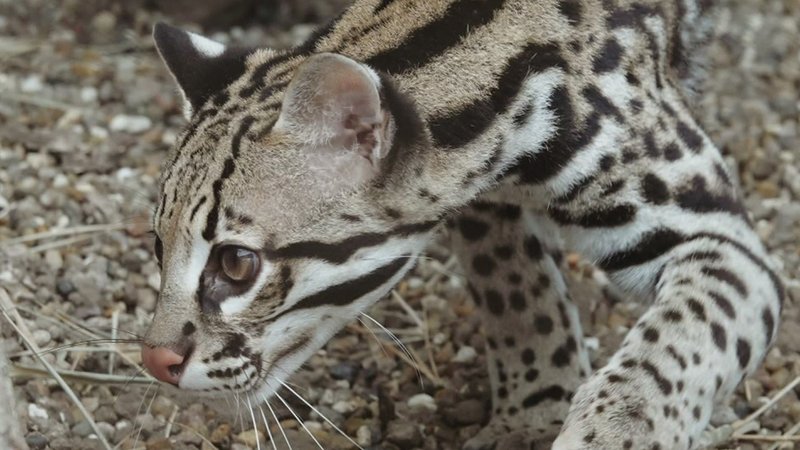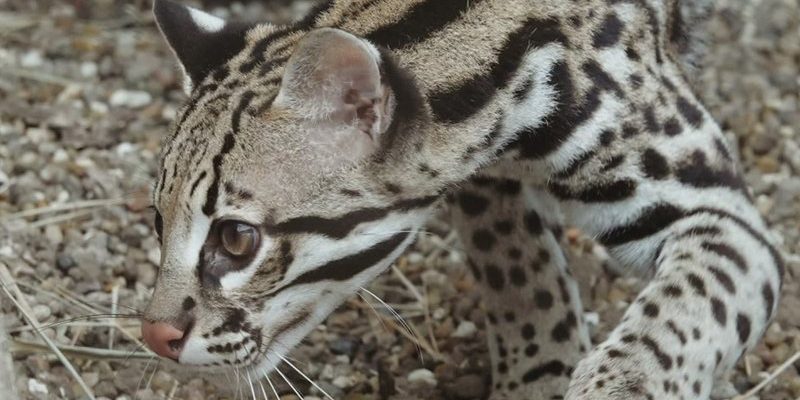
Imagine trying to thrive in a place where the weather can change drastically, food sources might vanish unexpectedly, and predators lurk around every corner. This is the everyday reality for ocelots. So, how do they manage? Well, it turns out that their keen instincts, unique physical attributes, and clever behaviors all come together to create a survival story that’s quite fascinating. Let’s take a closer look at how these beautiful cats thrive despite the odds.
Adaptability: The Ocelot’s Secret Weapon
Ocelots are known for their incredible adaptability. This trait is key to their survival in various habitats, ranging from tropical rainforests to coastal mangroves and even the dry grasslands of South America. Their ability to adjust to different environments makes them successful hunters and survivors.
One of the main ways ocelots show adaptability is through their diet. They’re opportunistic eaters, which means they won’t hesitate to switch up their meals based on what’s available. A typical ocelot might feast on small mammals, birds, reptiles, or even insects, depending on the season and habitat. If one food source becomes scarce, they can easily pivot to another—like going from hunting rodents in the forest to snagging fish in wetlands.
This versatility also extends to their behavior. Ocelots can be both nocturnal and diurnal, meaning they can hunt during the night or day. This flexibility helps them avoid competition with other predators and find food when it’s most abundant. It’s almost like they have a built-in switch that allows them to change their daily routine based on their needs and surroundings.
Cunning Hunting Techniques
You might be wondering how ocelots, with their relatively small size, manage to hunt effectively in tough conditions. The answer lies in their stealthy hunting techniques. Ocelots are experts at blending into their environments. Their striking coat—featuring beautiful spots and stripes—acts like a natural camouflage, allowing them to stalk their prey without being easily seen.
When hunting, ocelots often rely on a mix of patience and speed. They can quietly approach their target and then pounce with remarkable agility. Imagine a tiny tiger, slinking through the underbrush, waiting for the perfect moment to leap. This precise combination of stealth and sudden burst of speed can catch prey off guard.
In addition to their physical abilities, ocelots use their keen sense of hearing and eyesight to locate prey. They can even hunt in low-light conditions thanks to the special structure of their eyes, which helps them see clearly in the dark. This means they can take advantage of the night to hunt, giving them a competitive edge over other animals that may not be as adept in low light.
Water as a Lifeline
While ocelots are primarily terrestrial animals, they have a real affinity for water. Their habitats often include wetland areas or regions near rivers and streams, which provide not only drinking water but also additional food sources. Ocelots are known to be skilled swimmers, which is somewhat unusual for small cats. This ability opens up even more hunting opportunities—like fishing or hunting aquatic birds—which can be crucial during dry seasons when food is scarce.
When a drought hits or food becomes limited, ocelots often turn to rivers and lakes to find fish or other water-dwelling creatures. It’s like having a hidden buffet that many other predators might overlook. Their flexible dietary habits mean that they can make the most of the resources available to them, whether it’s a muddy riverbank or thick vegetation.
Moreover, water also helps ocelots regulate their body temperature in sweltering heat. They will often wade into shallow pools to cool off, showcasing their ability to thrive in varying conditions. It’s a clever survival tactic that ensures they can stay healthy and nourished, no matter the challenges they face.
Territorial Marking and Communication
Ocelots are solitary creatures, and establishing territory is vital for their survival. They communicate with one another through a variety of methods, including vocalizations, scent marking, and even visual signals. By leaving their scent—through urine or secretions from scent glands—they can mark their territory and inform other ocelots of their presence.
Territorial boundaries can be fluid and may change depending on the availability of resources. If food is plentiful in one area, an ocelot might defend that space more aggressively. Think of it like a game of chess, where each move is calculated based on potential future outcomes. This behavior helps ensure they have access to food and space for themselves.
When they encounter another ocelot, they can also engage in vocal communication, using a range of sounds from low growls to high-pitched calls to convey messages. This form of communication is crucial, especially during mating season or when warning others of potential threats. Imagine them having a chat over coffee, letting each other know who’s who and what’s what in their surroundings.
Physical Adaptations for Survival
Ocelots are equipped with several physical adaptations that aid their survival in harsh environments. For starters, their sleek, muscular bodies and retractable claws allow them to climb trees with ease, helping them escape predators or find a good vantage point for hunting. Their sharp teeth and strong jaws make them efficient hunters, capable of bringing down prey much larger than themselves.
One remarkable adaptation is their fur, which not only provides camouflage but also helps insulate them against temperature changes. In cooler climates, it offers warmth, while in hotter regions, it can keep them cool. Their fur pattern plays a critical role in blending into the dappled light of their habitats, so they can stalk prey without being spotted.
Additionally, ocelots have an excellent sense of smell and hearing. These senses are vital for detecting predators or locating food from great distances. Imagine being able to smell a mouse scurrying around, even if it’s hidden under leaves! This heightened perception helps them navigate their environment with confidence, ensuring they stay one step ahead of danger.
Challenges and Conservation Efforts
Despite their stunning adaptability, ocelots face significant challenges in the wild. Habitat loss due to deforestation, urban development, and agricultural expansion poses a considerable threat. As their natural homes shrink, it becomes increasingly difficult for ocelots to find food, mates, and shelter.
Another challenge is poaching. Ocelots are sometimes hunted for their beautiful fur, which can significantly impact their populations. Additionally, vehicle collisions on roads and highways have become a serious concern as urban areas expand into their territories.
Conservation efforts are crucial to protect these fascinating felines. Many organizations are working to preserve ocelot habitats, establish wildlife corridors, and raise awareness about the importance of these animals in their ecosystems. By supporting sustainable practices and protecting natural areas, we can help ensure that future generations will continue to marvel at ocelots in the wild.
Ocelots are remarkable creatures that showcase an impressive ability to thrive in harsh environments. Their adaptability, cunning hunting techniques, and strong communication skills allow them to navigate challenges that would stump many other animals. As they face threats like habitat loss and poaching, it’s essential that we understand and appreciate these beautiful cats.
The next time you think of ocelots, remember that they are not just beautiful animals; they are survival experts scraping by in a world that can be unforgiving. By supporting efforts to protect their habitats, we can help ensure these incredible cats continue to inspire us with their resilience and adaptability for years to come.

